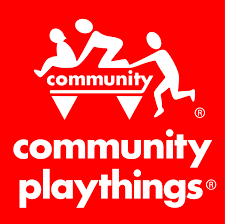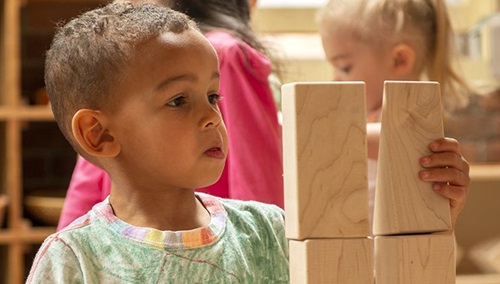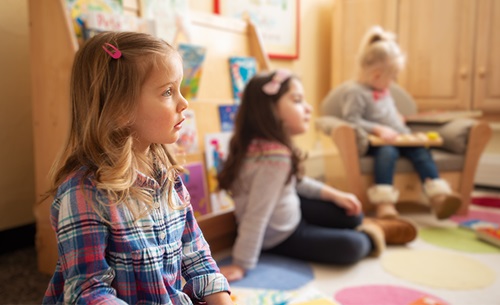Why Play?
The Importance of Protecting Play
| October 2025If you walk into a room full of preschoolers and see a child with a cardboard box on their head, a stick in their hand, and a group of friends marching behind them yelling “To the lava pit!”—you are witnessing play in its truest, most powerful form.
Let’s stop right here and acknowledge something: play is not fluff. It is not a reward for finishing “real” work. It is not something we do after we’ve met learning goals. Play is the learning. It’s the heartbeat of childhood. And frankly, it’s the part too many adults still don’t understand!
So let’s talk about it.
What Is Play?
Play is curiosity with movement. It’s storytelling with sticks. It’s math with pinecones and collaboration with cardboard. It’s a child building a ship from milk crates and sailing to South Dakota with a GPS made of flooring samples (yes, that happened).
Technically speaking, play is voluntary, self-directed, and internally motivated. It’s what Dr. Peter Gray calls “an activity where the means are more valued than the ends.” Children don’t play to produce something. They play to experience something. And that experience is exactly what develops their academic, social, and emotional foundation.
So if we want to raise kids who are kind, curious, creative, and resilient (and “ready for kindergarten”), we need to let them play.
Why Is Play Important?
Play is the OG lesson plan. If we want children to become readers, writers, scientists, and emotionally intelligent humans who don’t lose their cool when someone knocks over their block tower, we have to start with play.
Here’s what’s happening beneath the surface of that milk crate trip to South Dakota or a mud kitchen masterpiece:
- Cognitive Growth: When kids use loose parts to design a structure or pretend a stick is a pencil, they’re experimenting with classification, logic, and symbolic thinking. That’s Piaget-level learning right there.
- Language and Literacy: Every time a child says, “Let’s pretend…” or invents a story about a mermaid living in a hole in the woods (yep, that happened too), they’re building vocabulary, narrative structure, and communication skills.
- Social-Emotional Skills: Play is full of negotiation, collaboration, and conflict resolution. When we let kids navigate these moments with support, they’re developing the ability to share, empathize, and assert themselves.
- Physical Development: Jumping off a stump, digging in the dirt, or balancing on a log develops fine and gross motor skills and helps children learn what their bodies can do.
- Executive Function: Planning a fort, gathering materials, changing the play plan when something doesn’t work are the skills children need for lifelong problem-solving and adaptability.
When children play deeply and for long amounts of time, they ARE getting ready for Kindergarten. And for life in general.
If We Just Let Them Play … How Will They Learn?
I started out teaching in a very structured, teacher-directed "schoolified" preschool. I’ve printed the worksheets. I spent time each day making children recite calendar concepts even though it is too abstract for their preschool-aged brains. I’ve told kids to sit criss-cross-applesauce-eyes-on-me-one-two-three and “show me they’re listening” even though child development tells us they need to move to learn. I used to think I was preparing kids for school by making them do school-like things. But now I know better.
Children learn more deeply through play than they ever will through passive instruction.
That doesn’t mean teachers are just sitting back with a coffee watching the chaos unfold. In a play-based classroom, the teacher’s role is even more nuanced and powerful. Let me explain...
So What Is the Role of the Teacher in Play?
Think less “play police” and more “play detective.” The teacher’s role in a play-based environment is to notice play and the learning that is happening, support it, and extend it when needed.
Here's what that can look like:
- Set up an environment that begs to be explored. Offer materials that children can manipulate, move, and reimagine. Loose parts like cardboard tubes, scarves, sticks, rocks, and blocks invite creativity. A toy horse is always a horse. A wood block can be a cheeseburger, a cell phone, an ice skate and it can be a horse too!
- Observe without interrupting. Watch what they do. What are they figuring out? What challenges are emerging? What stories are being told?
- Ask curious questions. Questions like, “What’s happening here?” or “How did you decide to use that there?” spark reflection and metacognition without hijacking their play. The less interruption from the teacher if you aren’t invited into their play, the deeper the play!
- Make their learning visible. Document their ideas. Take photos. Jot down their words. Share their stories with families. Let children revisit their work and expand on it.
- Stay out of the way until you’re needed. Sometimes that means narrating social scenarios to help with conflict resolution. Sometimes it means sitting on your hands and letting them work it out. Either way, you’re not the boss of their play. You’re the protector of it. Read that again.
How Can We Scaffold Play Without Stealing the Reins?
Scaffolding means offering just enough support to help a child move from where they are to where they’re headed next. In a play-based classroom, this might look like:
- Adding clipboards and pencils to the block area so children can “make blueprints”
- Providing language tools to help them negotiate (“I’m using it now, but you can have a turn when I’m done”)
- Noticing and naming the learning you see in real time (“You just figured out how to balance that plank! That’s problem-solving!”)
- Introducing new materials based on children’s interests (They’re into bugs? Bring in magnifying glasses, bug books and take them on a bug hunt outdoors!)
Scaffolding means trusting the process of play while gently offering opportunities for deeper engagement. This honors their play without controlling it.
So Why Play?
Because it works.
Because play is developmentally appropriate, emotionally responsive, and neurologically rich. Because every tower toppled, every mud pie served, every boat going to South Dakota constructed from milk crates is teaching something valuable. And because our world needs more grownups who learned how to collaborate, problem-solve, and imagine new possibilities when they were small.
Play is the foundation for academic learning. It’s the path to social and emotional intelligence. It’s the birthplace of creativity, resilience, and innovation.
So let them play.
Let them get messy. Let them dump out the basket of loose parts and turn it into a bakery. Let them pretend, question, build, and break.
And let us, the adults, be brave enough to defend childhood, even when it may look like chaos from the outside.
You don’t need to justify play. You just need to protect it. That’s your job. And it matters more than you know.












